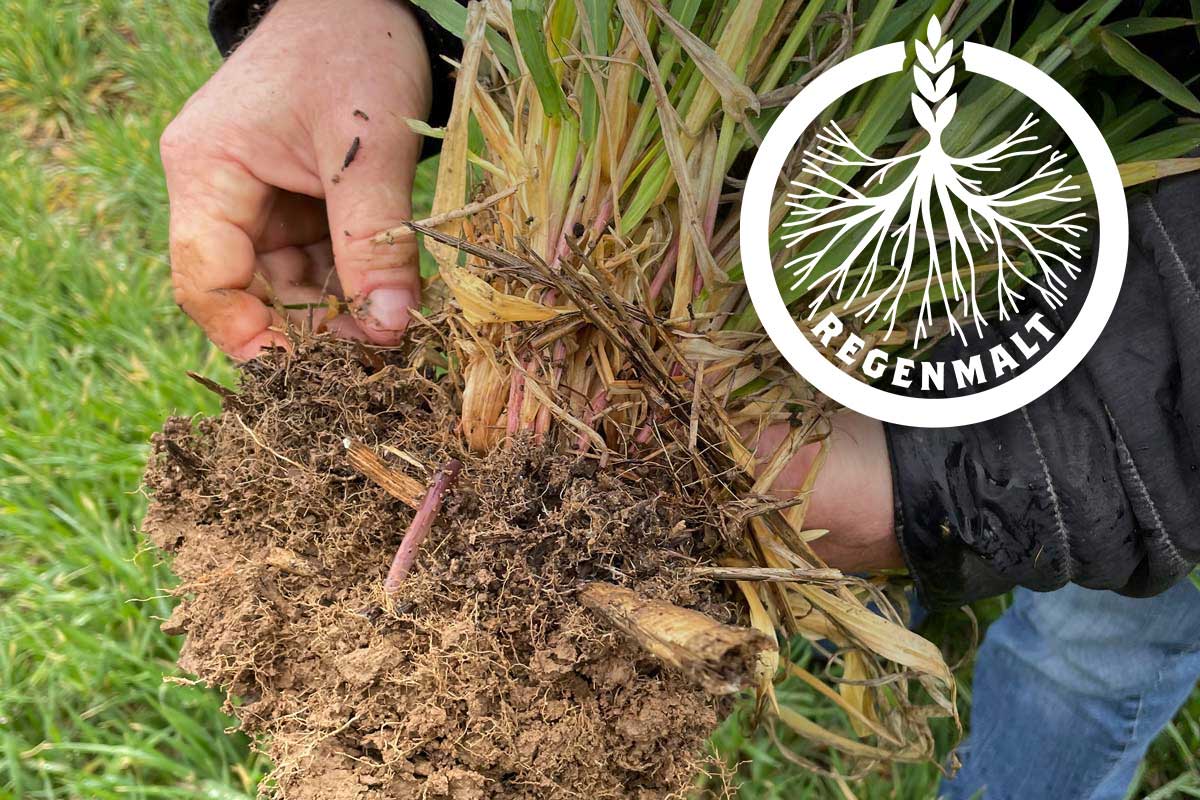
ROOTING FOR OUR FUTURE
Proximity malt has shown that keeping the beer production ecosystem close to home has proven to benefit all stakeholders, from growers to brewers to consumers. Today, however, our ecosystem is facing agricultural and climate challenges, but we see an opportunity to help our farmers, which helps everyone in our supply chain.
Through regenerative farming and a localized supply chain, Proximity Malt is priming the American brewing industry to meet the needs of sustainable brewing practices and is proud to present a new regenerative product – ReGenMalt.
This new malt category provides a solution to four key challenges facing barley farming partners:

IMPROVING SOIL HEALTH AND EROSION
Keeping the land closer to a more natural state allows the soil to regain more nutrients. This rich soil is a more fertile plot for barley to grow in, encouraging a deeper and stronger root system. Together, regenerative practices cultivate healthy root-rich soil that is capable of producing high quality crops with fewer synthetic inputs and is less susceptible to erosion.

INCREASING WATER RETENTION
In conventional barley farming, much of the water for growth ends up running off the fields, often carrying valuable topsoil with it. But with regenerative practices, more water stays in the fields, maximizing a valuable resource in areas where dryland conditions and heat can impact quality and yield.. Regenerative practices not only boost the soil’s water-holding capacity but also decrease water runoff creating healthier, more sustainable barley crops.

ENCOURAGING BIODIVERSITY
Regenerative agriculture reduces or eliminates tillage to avoid disturbing soil as much as possible. It also uses diversified crop rotations and cover crops, keeping different types of living roots in the soil.. By working with nature instead of against it, these natural processes help with pest management and reductions in synthetic inputs, protecting and supporting biodiversity below and above ground for barley crops.

REDUCING CARBON EMISSIONS
Agriculture has a significant impact on our climate. While it contributes to emissions, it also has the potential to capture carbon through the implementation of regenerative practices. Sequestered carbon feeds the microorganisms that in turn increase soil organic matter content. Soil with high levels of organic matter optimize available moisture and contribute significantly to premium barley crops.

